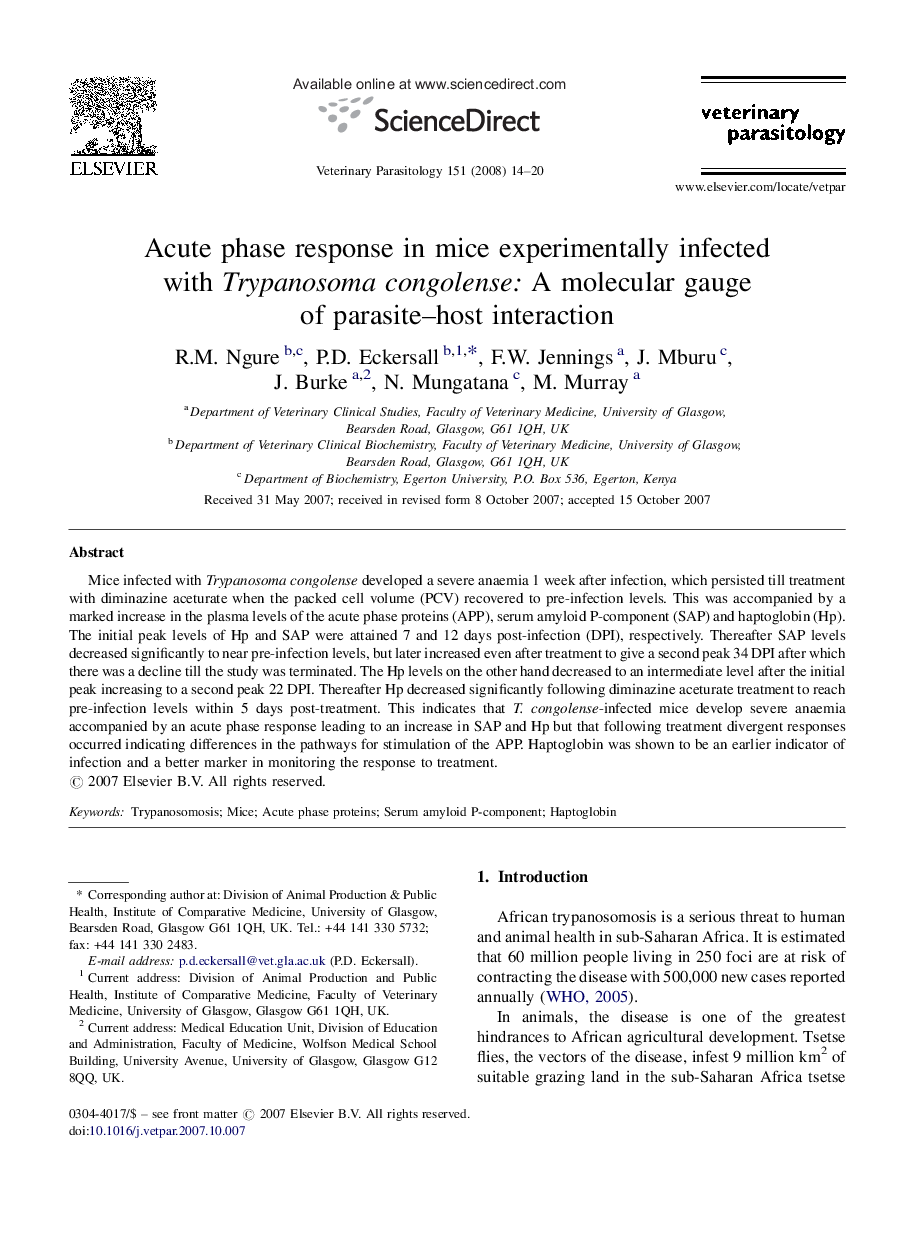| Article ID | Journal | Published Year | Pages | File Type |
|---|---|---|---|---|
| 2471783 | Veterinary Parasitology | 2008 | 7 Pages |
Mice infected with Trypanosoma congolense developed a severe anaemia 1 week after infection, which persisted till treatment with diminazine aceturate when the packed cell volume (PCV) recovered to pre-infection levels. This was accompanied by a marked increase in the plasma levels of the acute phase proteins (APP), serum amyloid P-component (SAP) and haptoglobin (Hp). The initial peak levels of Hp and SAP were attained 7 and 12 days post-infection (DPI), respectively. Thereafter SAP levels decreased significantly to near pre-infection levels, but later increased even after treatment to give a second peak 34 DPI after which there was a decline till the study was terminated. The Hp levels on the other hand decreased to an intermediate level after the initial peak increasing to a second peak 22 DPI. Thereafter Hp decreased significantly following diminazine aceturate treatment to reach pre-infection levels within 5 days post-treatment. This indicates that T. congolense-infected mice develop severe anaemia accompanied by an acute phase response leading to an increase in SAP and Hp but that following treatment divergent responses occurred indicating differences in the pathways for stimulation of the APP. Haptoglobin was shown to be an earlier indicator of infection and a better marker in monitoring the response to treatment.
